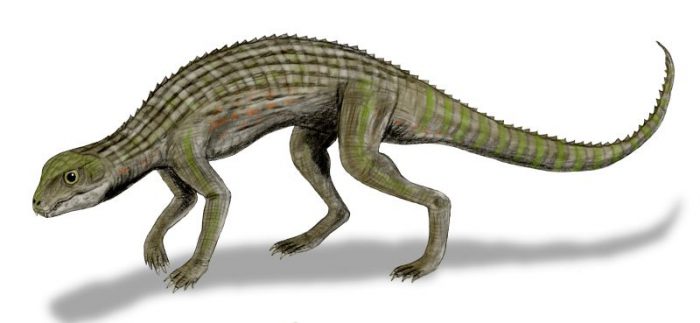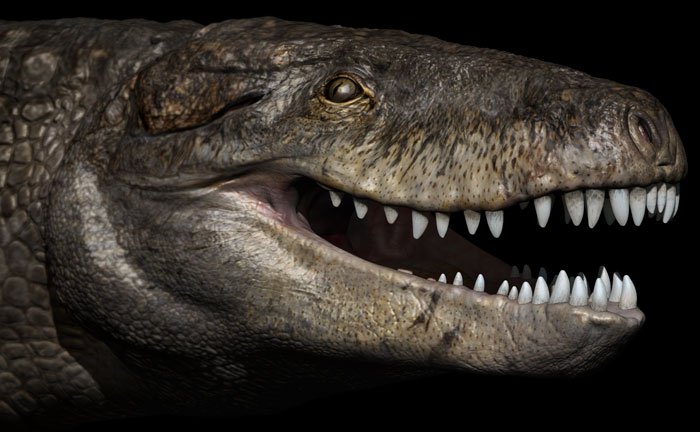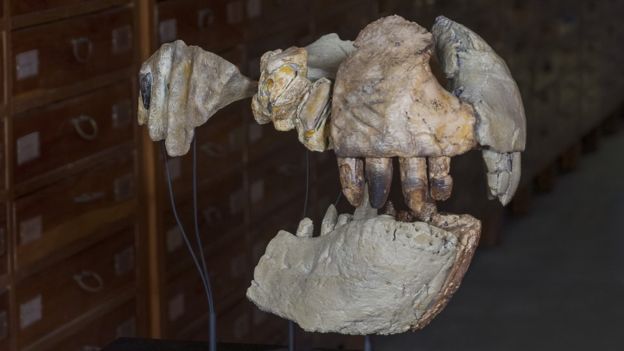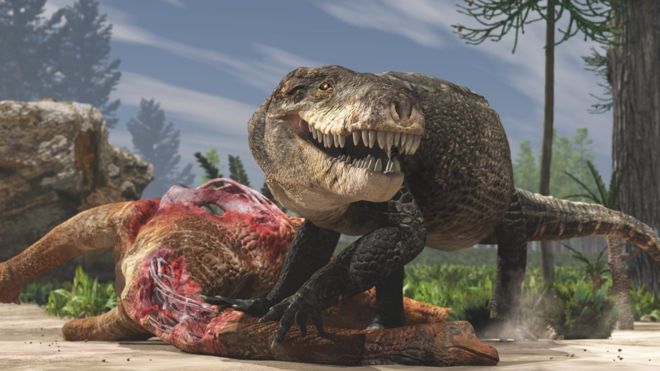Modern saltwater crocodiles are the largest, heaviest reptiles on the planet. They can reach (and get even larger than) 6 m (19.7 ft.), and weigh 1,000 to 1,200 kg (2,200–2,600 lb.). And they also have the most powerful bite force of any animal on Earth.
If these features combine to make them one of the most fearsome predators around... well, let's just say that wouldn't wanted to have met their ancient cousin! The recently confirmed Razanandrongobe sakalavae lived about 170 million years ago (during the Jurassic period) in what is now Madagascar. It was about the size of the largest saltwater crocodiles, but walked upright and had bone-crushing teeth like those of Tyrannosaurus rex.
Yikes!
You can call me "Razana"
Scientists have already taken to calling this beast "Razana" for short. But in real life, its huge scientific name would the least of your worries.
Razana belongs to a group of crocodile ancestors known as the notoschuians (meaning "southern crocodiles"). Though these reptiles lived at the same time as dinosaurs, they were not dinosaurs. Most notoschuians were light, thin, upright-walking reptiles that measured around a metre (3 ft.) long, with medium-to-short snouts. They were actually kind of cute.

Adamantinasuchus navae was a typical notoschuian of the late Cretaceous period in Brazil. (Artist's impression: Fabio Manucci)
See?
Razana, on the other hand? Not so cute. It was an earlier, mightier version of these creatures.
Mighty motor muncher

Razana's latest trip to the dentist was a big success! (Artist's impression: Fabio Manucci)
New fossil evidence has allowed scientists to paint a clearer picture of this hefty predator. It walked upright like other notoschuians, but its huge size was far more frightening. Its mouth was full of large, serrated teeth. Serrated edges are full of tiny bumps or spikes. Predators that have them, such as T. rex, used them to crush and break bones and tendons, which they fed on along with the meat of their prey.

Razana's jaw fossil. (Natural History Museum in Milan)
Most paleontology (the study of prehistoric life) is a lot of educated guesses. This is no exception. Scientists are trying to figure out what Razana looked like based on little more than skull fossils like the one you see above. But by comparing it to other fossils of the day, they figure that this crocodile-like creature would have been about 7 m (23 ft.) long and 1,000 kg (2,200 lbs).
Its large size and mouthful of teeth allowed Razana to compete for food with the top predator dinos of its day. And it often would've won, too! No surprise there. After all, would you want to mess with Razzie?
 "Razana" was a top banana in the world of Jurassic predators. (Natural History Museum in Milan/Fabio Manucci)
"Razana" was a top banana in the world of Jurassic predators. (Natural History Museum in Milan/Fabio Manucci)










Scary!